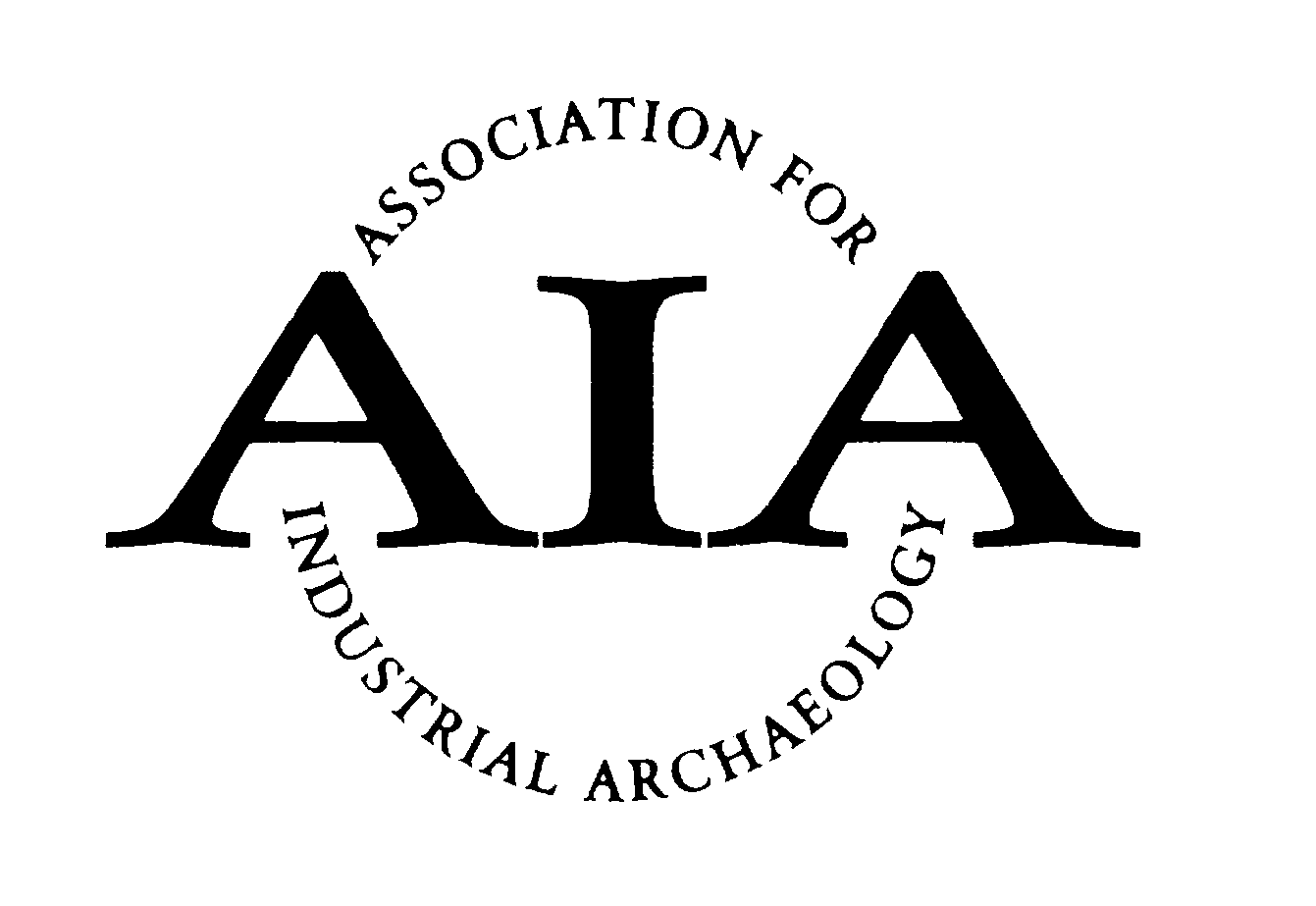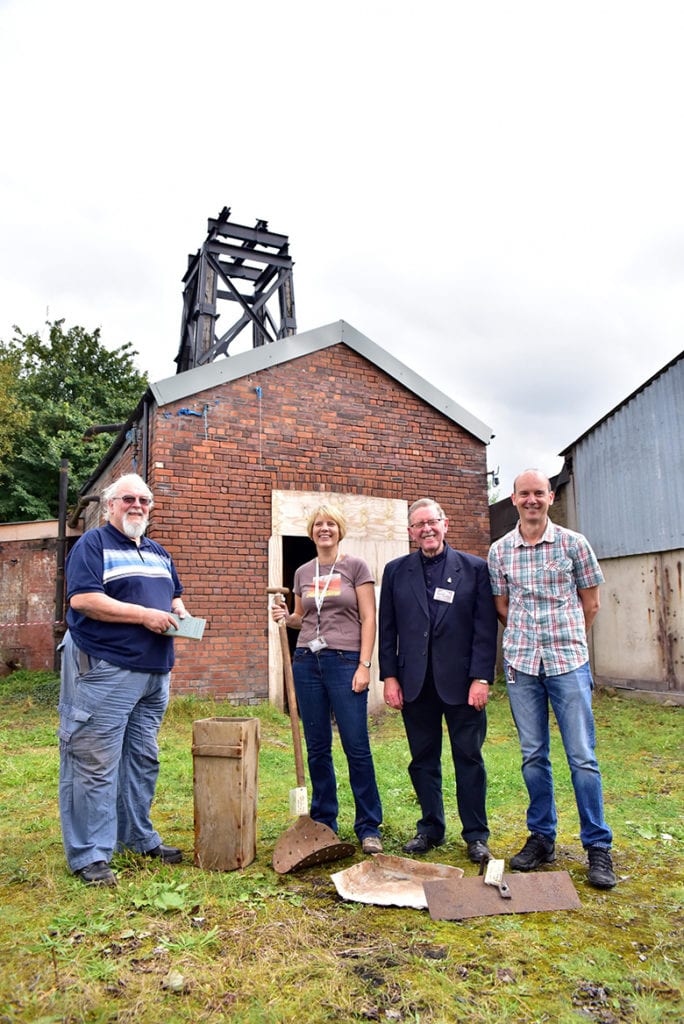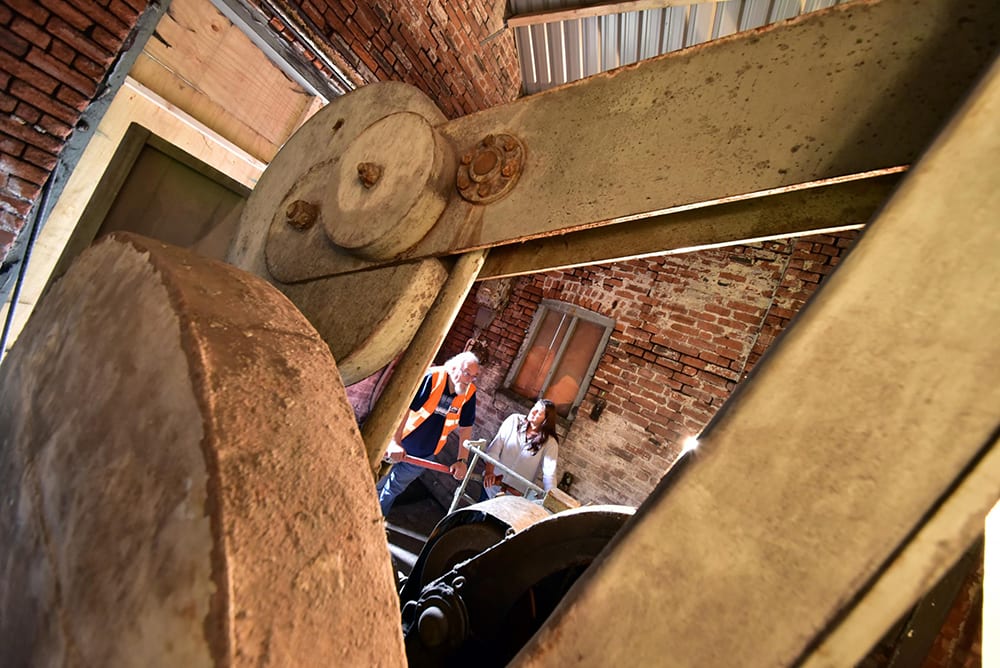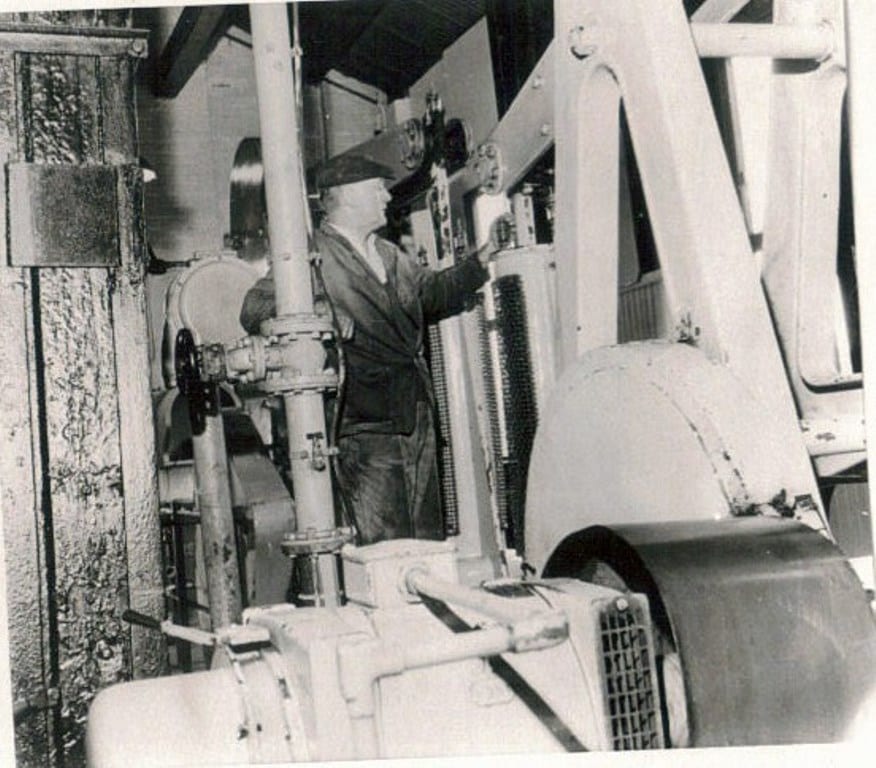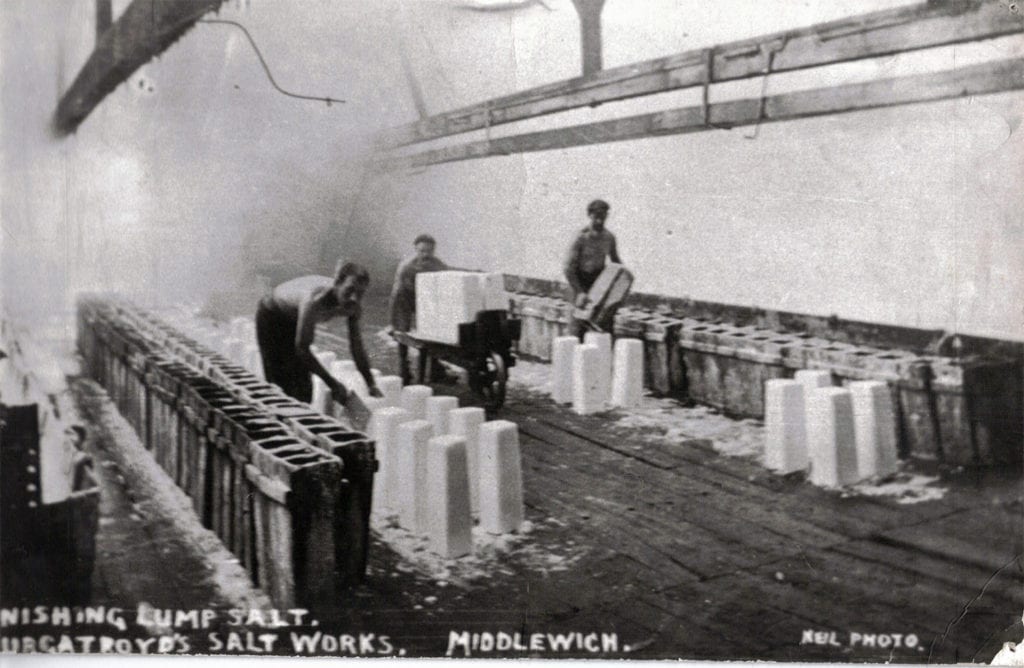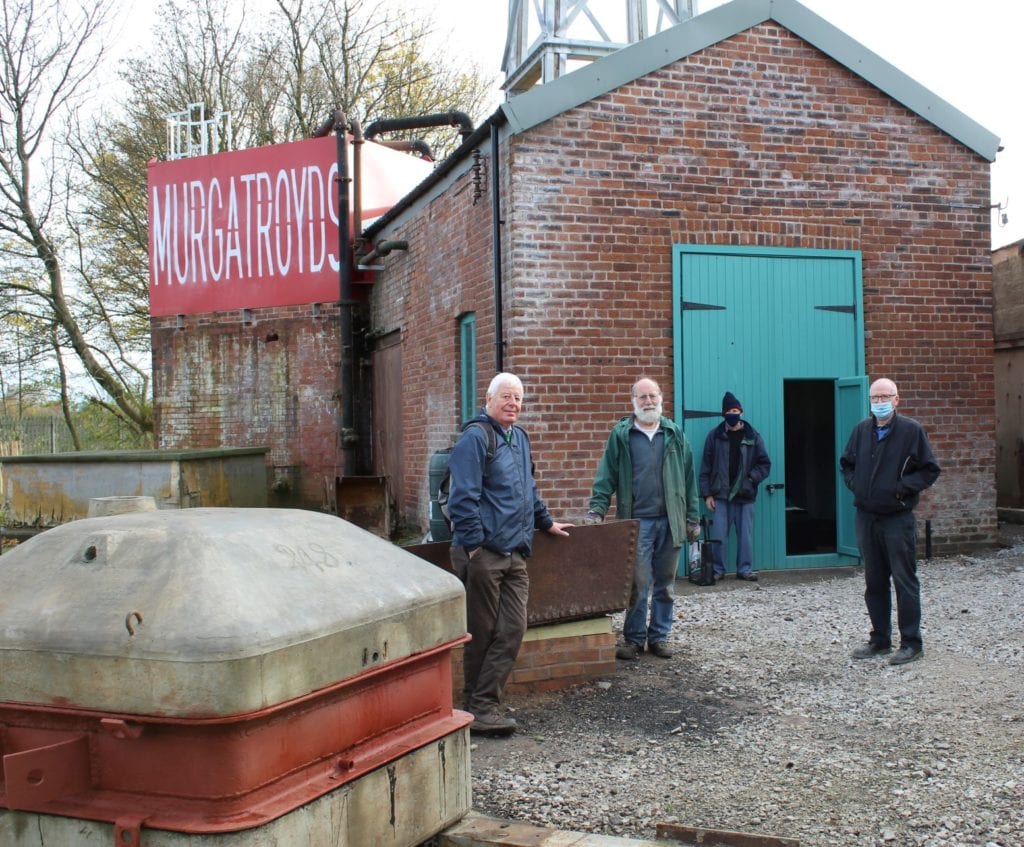Revealing Murgatroyd’s project, a quest to save a unique scheduled Monument that had fallen into a derelict state. As the project progressed volunteers and professionals alike fought to restore the site for use as a heritage resource. A fitting tribute to George Murgatroyd whose vision saved the Middlewich salt industry and kick-started the chemical industry in the late 19th and early 20th Centuries, providing many jobs and business opportunities.
The photographs in this document show our journey.
The full project report and appendices are now available in the members area.
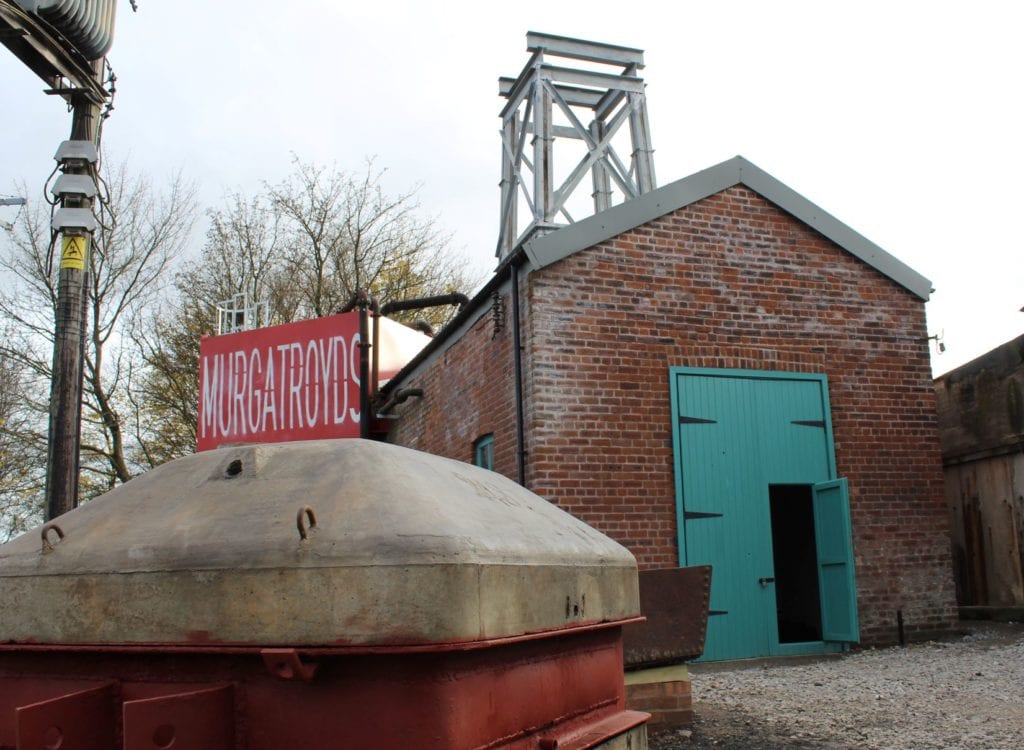
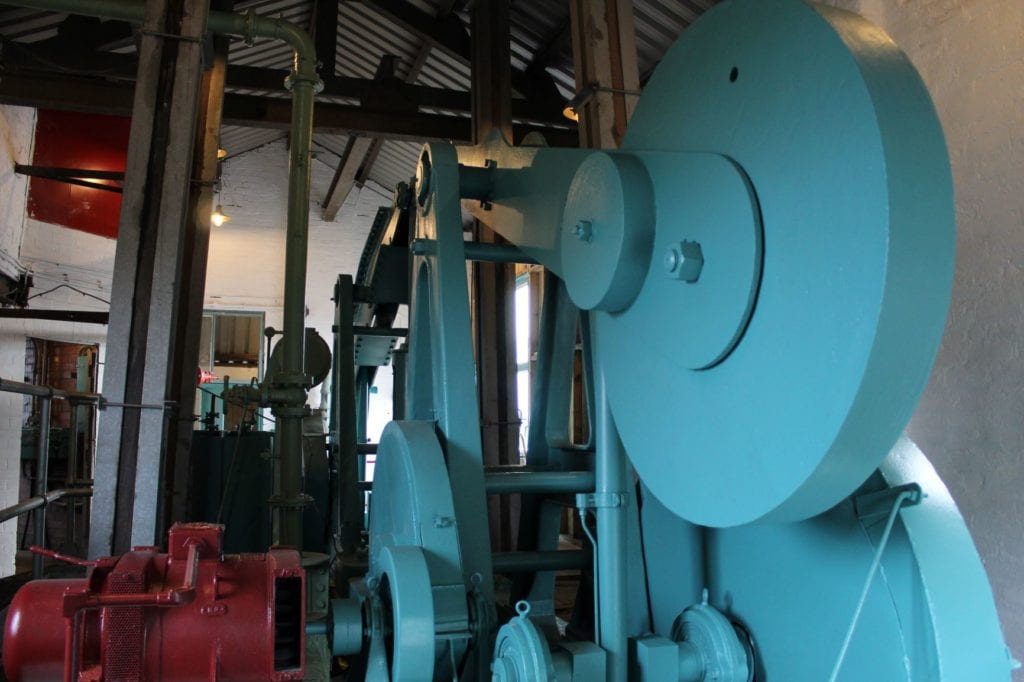
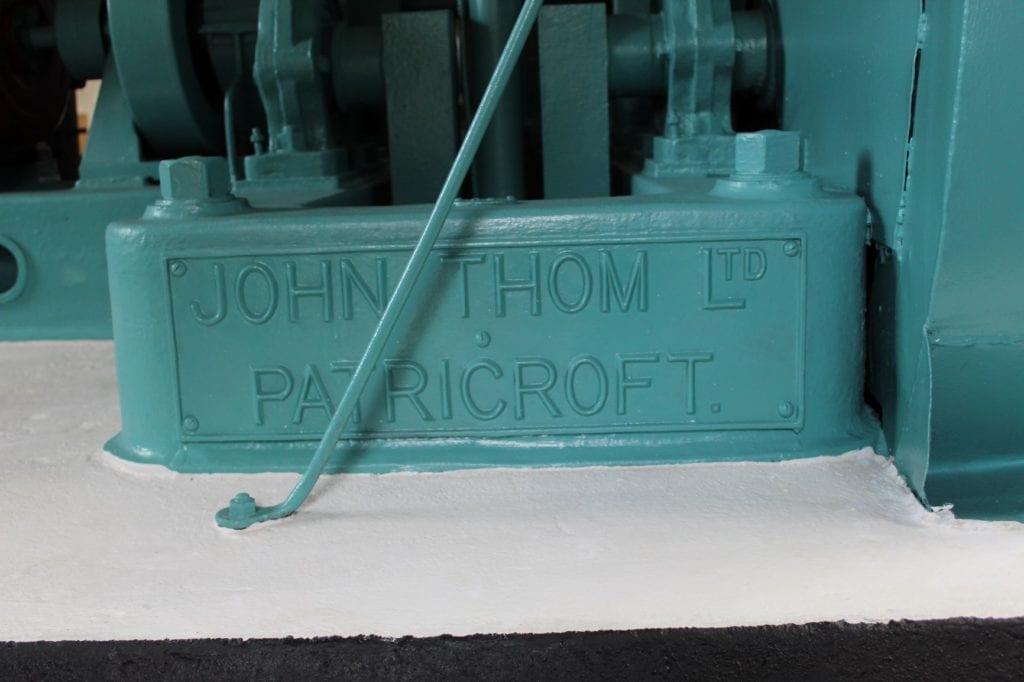
Background
Murgatroyd’s Brine Pumps, Brooks Lane. Historic England list entry number 1020122.
Murgatroyd’s Brine Pumps were an ‘at risk’ scheduled monument on an historic industrial site. They are the only intact pumps over an original hand-dug shaft left in Britain. The site has national significance as one of the few remains of Cheshire’s large salt industry and local significance as the first discovery of rock salt in Middlewich in 1889. It also, for the first time, tapped the brine stream that had been feeding the town for thousands of years.
Murgatroyd’s Brine Pumps are the last remaining part of Murgatroyd’s Salt and Chemical Works (1889-2010). They have a story to tell of open pan salt making in Cheshire and the first developments of the new and emerging Chemical Industry.
The pumps are the only complete and in-situ ‘wild brine’ pumps left in the UK with an original hand-dug timber-lined shaft and gantry, both dating from 1889. The assets are housed in an early 20th century brick building on a site that is of geological and geographical interest. Its national importance is acknowledged by its designation as a scheduled monument (SM 34588). The brine pumps have considerable communal value. The Manchester engineer George Murgatroyd’s discovery of rock salt and the brine stream, gave employment and a renewal of the town’s prosperity in the Victorian era and beyond. Many residents have strong family connections to the site and an interest in the project as evidenced by the public consultation exercises in 2011 and 2015 and attendances at site visits in 2016 and 2017.
The planned project
This project intended to repair and preserve unique elements of national importance including the 19th Century gantry, shaft and early 20th Century pumps by recruiting a team of professionals, retired engineers and volunteers. This would create a community project which would turn the site into a sustainable education and visitor resource, creating opportunities for volunteers to learn new skills, and to share existing skills and knowledge.
The surrounding land, adjacent to Sanderson’s brook, will lend itself to future development as an environmental resource for educational study.
For the built heritage part of the project, volunteers, each working under a mentor and provided with relevant training, will be able to be involved in the conservation of the gantry, repairs to the well head and work on the two rare pumps manufactured by John Thom of Patricroft, Manchester. Because of their rarity and historical design, the pumps are of great significance to experts.
As an educational and interpretive resource, the land surrounding the pump house forms an important part of the overall project. Overall the site is in poor condition with the risk of loss of historic fabric as identified by its ‘at risk’ status. The project is not concerned with built heritage only.
The Trust holds the ‘George Twigg Archive’ covering Murgatroyd’s over the 19th to the 21st centuries, amounting to over 3,000 documents, maps, drawings, photographs, oral interviews, film, artefacts etc. These were all catalogued but not then accessible to the wider public. The archive project wolud digitise and publish the archive online, where it will make a significant contribution to the national archive for researchers into Britain’s industrial past. It will enable members of the public to research family history and will enable teachers to access information on local history.
Overall the site has great historical value and marks the changes and developments in the salt and chemical industries for the last 129 years.
This project is devised as a ‘community restoration project’ with its own set of outcomes, enabling people to engage with the heritage of Murgatroyd’s and to be able to gain new skills, build knowledge and share experiences.
Completion of both projects wolud ensure that the gantry, shaft, brine pumps, building and landscape work would be in full conservation repair and rem oved from the ‘at risk’ register.
The projects will deliver volunteer opportunities, will increase our volunteer capacity and increase knowledge in our salt and chemical heritage. Our archival heritage will be accessible and open for all to explore.
The outcomes
The project ran from September 2018 to November 2020
The site, at Middlewich, was on the ‘Heritage at Risk’ Register but thanks to generous contributions from Historic England, The National Lottery Heritage Fund, The Association for IndusNovember 2020 trial Archaeology and Cheshire East Council, Middlewich Heritage Trust has restored the well head, timber gantry, pumping rods and pumps, and brine tank.
This included removing the 1889 gantry, which amazingly lifted out in one piece but the wood had deteriorated too badly to be restored. The original construction was copied using reclaimed 100-year-old pitch pine with elements of the old gantry to create a new gantry.
The well head was now clear, revealing the generally good condition of the timbers, which needed little replacement. As volunteers cleared years of debris, the route of the old steam pump pipes, changes made to the pumps, reinforcement of some timbers and concrete plinths were documented.
The shaft cover was too degraded so was replaced with new steel mesh panels and a walkway so that visitors are now raised above differing floor levels and the newly illuminated wooden lined shaft remains visible.
All metal work was shot blasted to evaluate its condition and paint samples were taken so the metal could be primed and repainted.
The shaft survey suggested that the pump pipes had badly deteriorated but, surprisingly, the submersible pump and pipes were retrieved without any problems. The pump, almost pristine, was shot blasted back to bare metal and conserved for exhibition.
The external brine tank was also too corroded to preserve and was replaced.
This successful project gave opportunities for professional volunteers to help with drawings, specifications, and hands-on conservation work. This in turn gave general volunteers direction to undertake restoration, to learn about conservation methods and, working with professionals, to bring the site into public use. New research gave a better understanding of the site for preparing interpretation material.
For further information, please browse this site and the linked Virtual Museum web site pages by using the buttons at the top of the screen.


